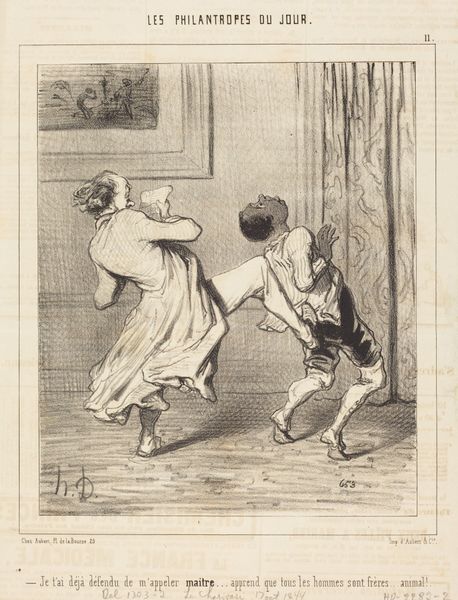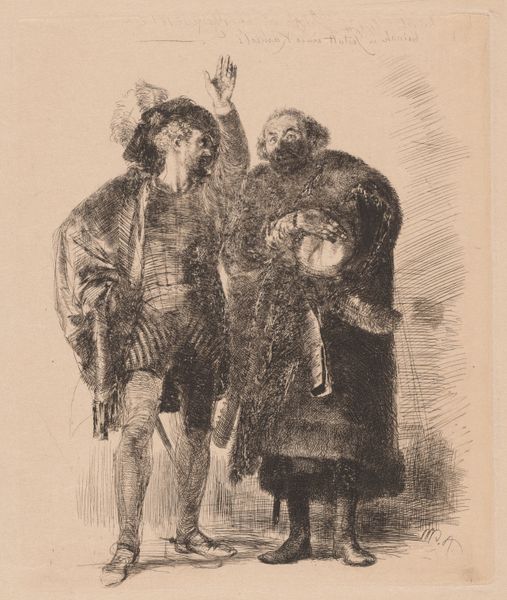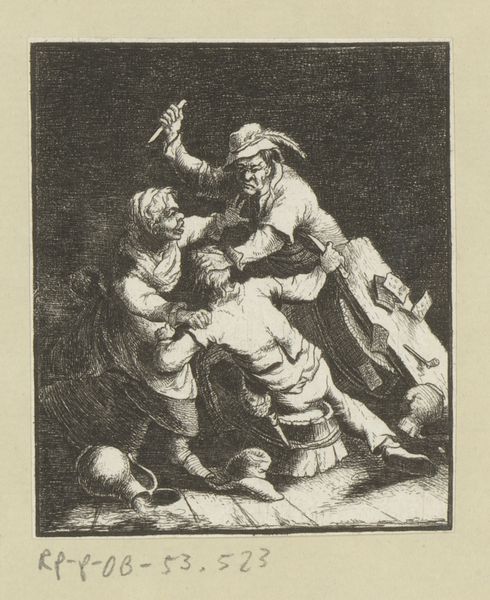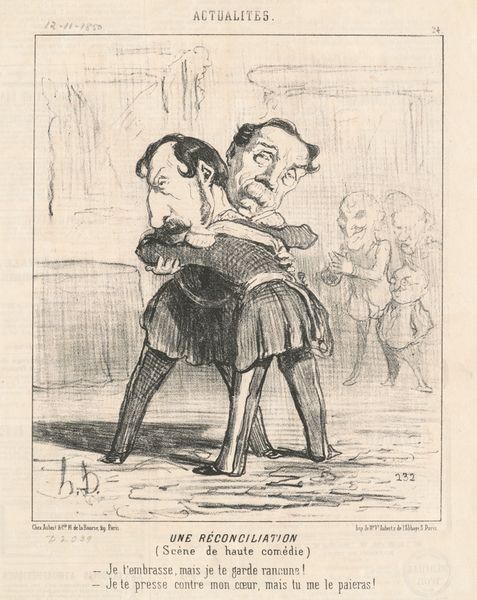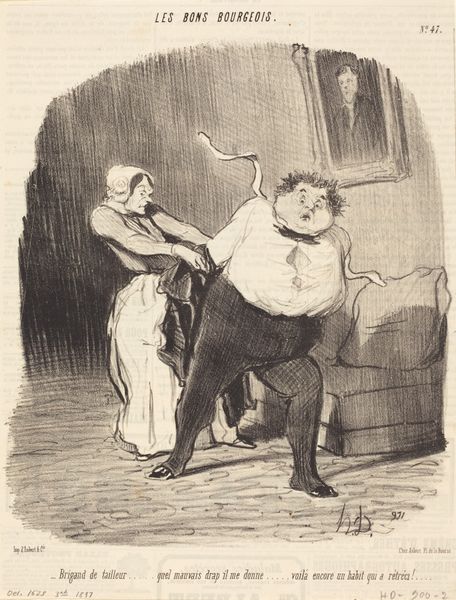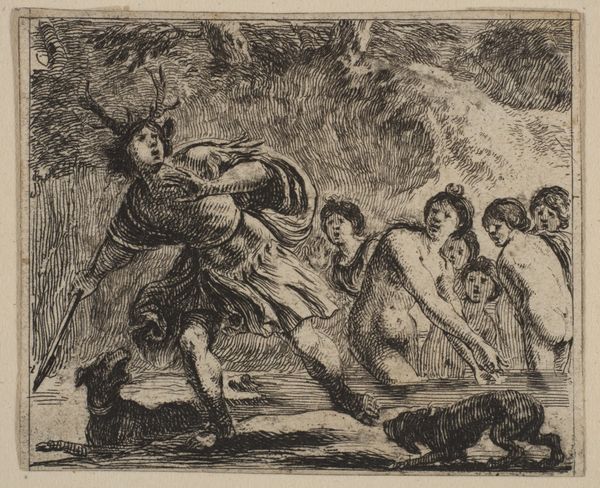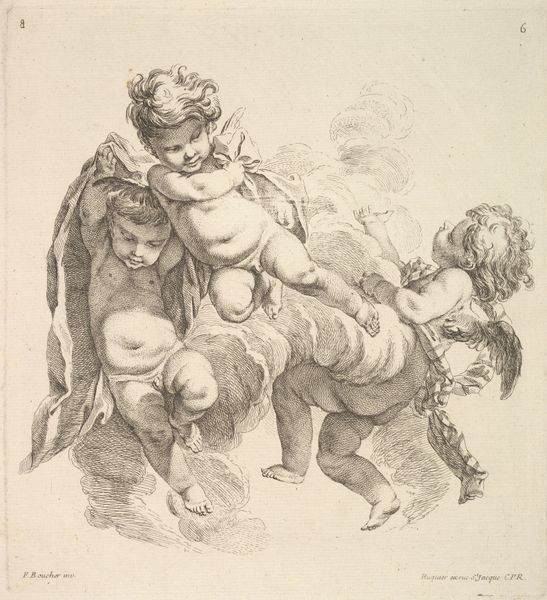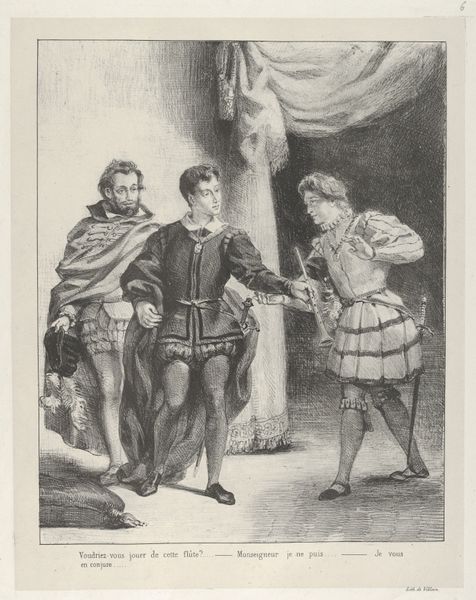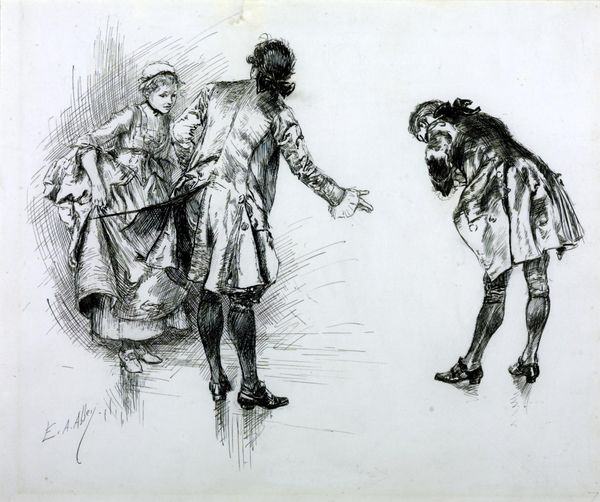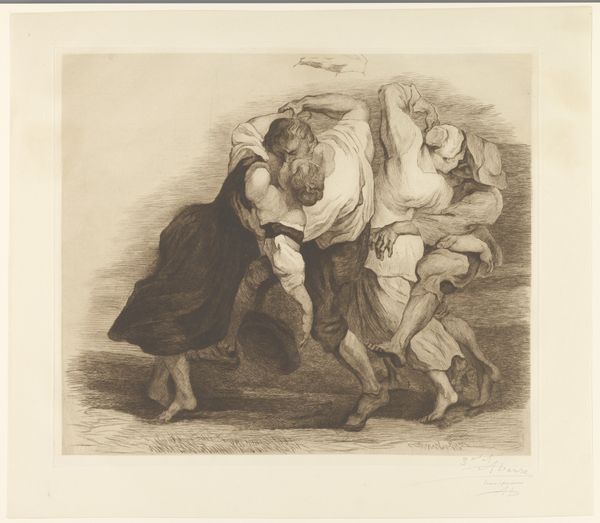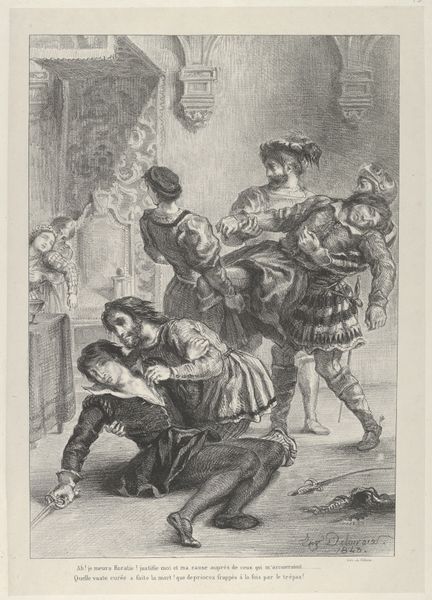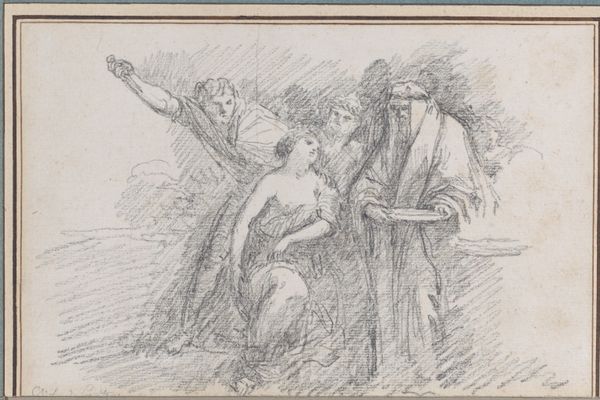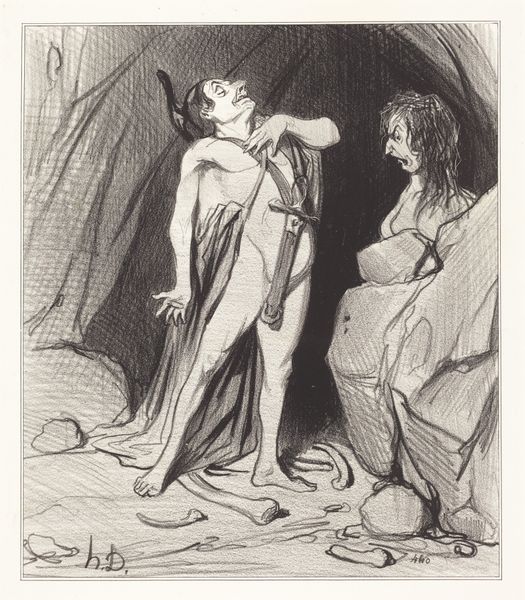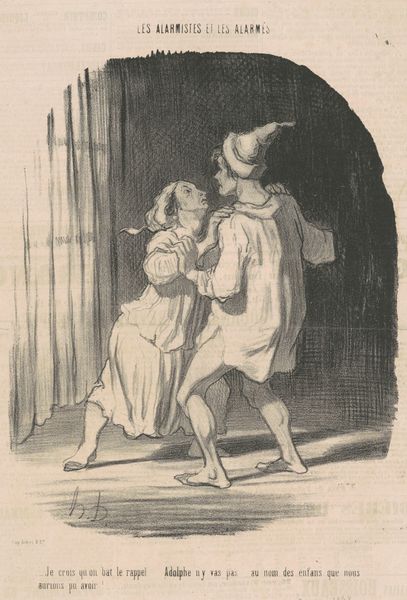
print, etching
# print
#
etching
#
figuration
#
history-painting
#
erotic-art
Dimensions: 223 mm (height) x 210 mm (width) (plademaal)
Oluf Hartmann created this print, "Bacchanter," using etching, a technique with a long history. The image is made by covering a metal plate with a waxy, acid-resistant layer. The artist then scratches an image into this layer, exposing the metal beneath. When the plate is dipped in acid, the exposed lines are eaten away, creating grooves. Ink is then applied to the plate, filling these grooves, and the surface is wiped clean. Finally, paper is pressed against the plate, transferring the ink and creating the print. The success of an etching lies in controlling the acid’s bite, and wiping the plate just so. Hartmann, like other printmakers, likely relied on a commercial supply chain for his materials and tools. This points to a system where artistic creation intersects with industrial production and skilled labor. The image might seem spontaneous, but it emerges from a complex interplay of material, process, and social context. Appreciating this making process allows us to understand the full meaning of the print.
Comments
No comments
Be the first to comment and join the conversation on the ultimate creative platform.
